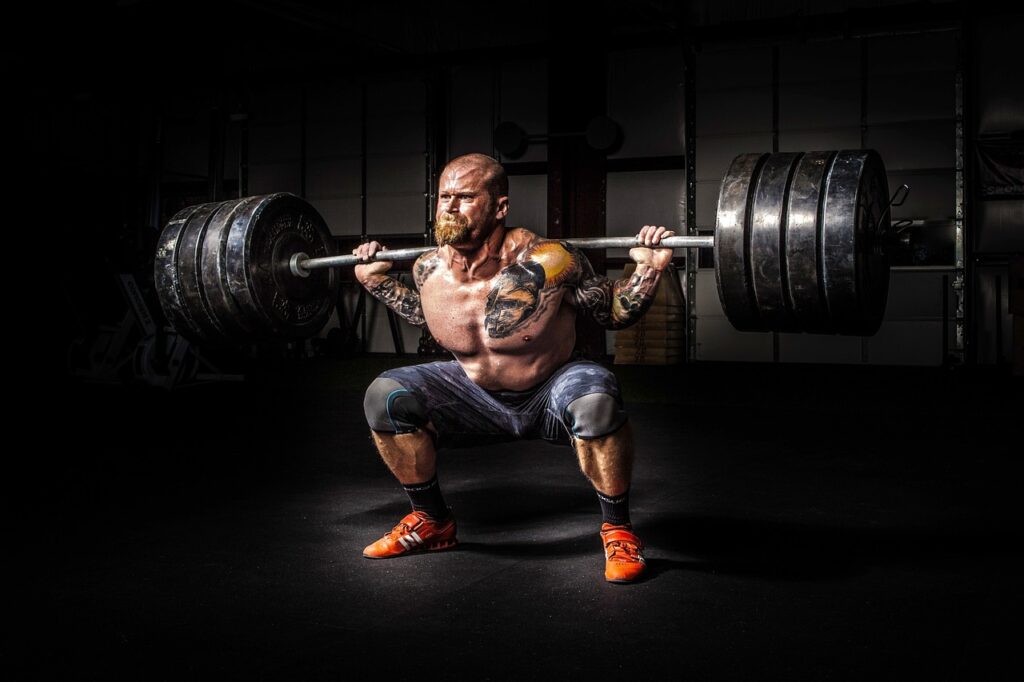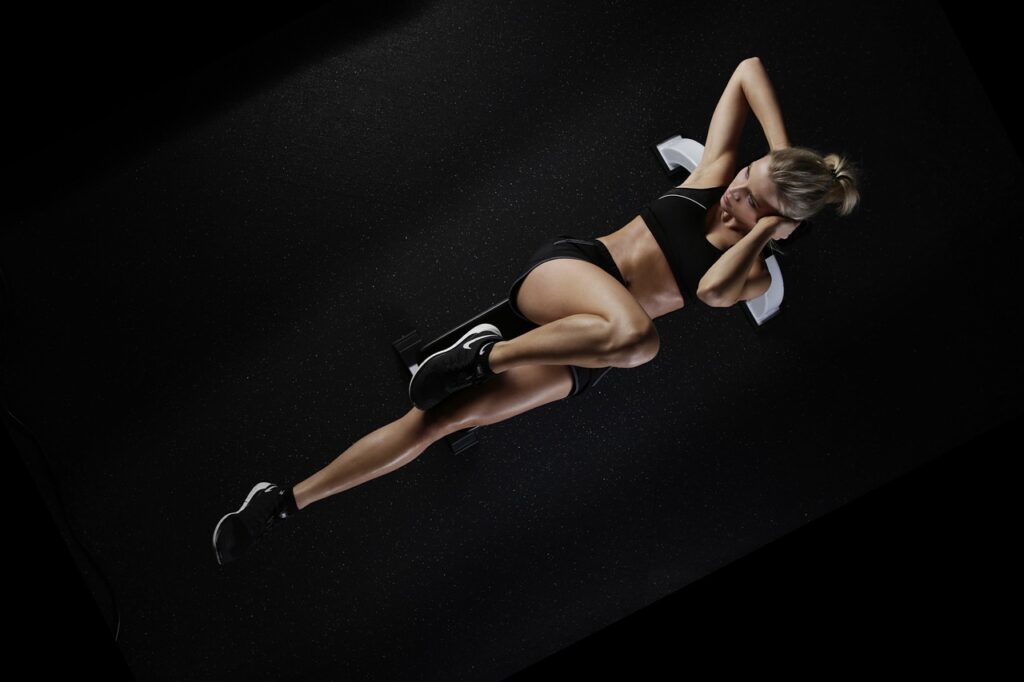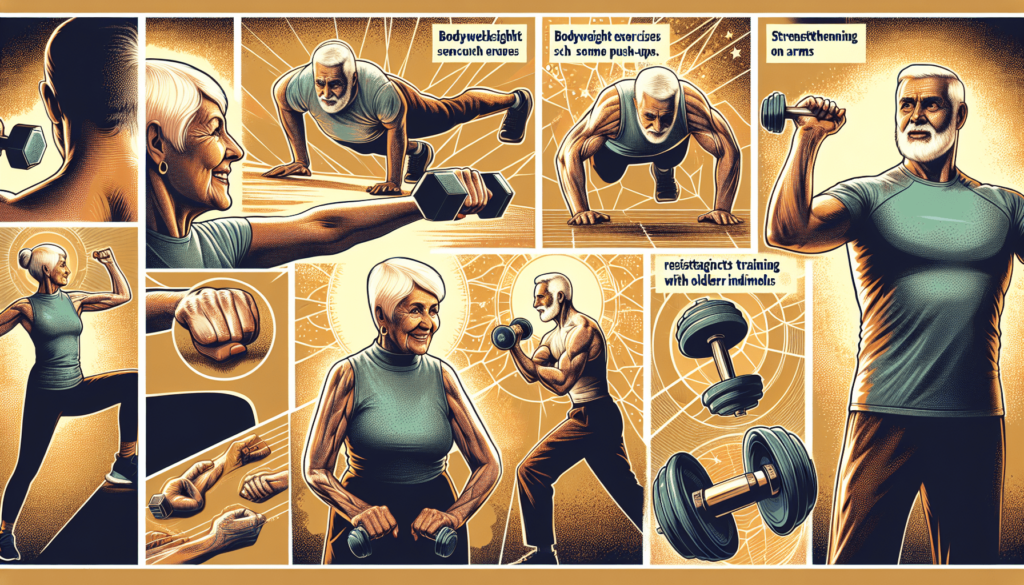Are you in your 60s and looking to build stronger, more muscular arms? Aging doesn’t mean you have to settle for weaker muscles. In this article, we’ll explore effective ways to develop bigger arms, even at 60 and beyond. Discover tips and exercises specifically tailored to help you achieve your goals and feel stronger and more confident in your own skin. Don’t let age hold you back from building the physique you desire – let’s dive in and find out how you can start building stronger arms at 60+!

This image is property of pixabay.com.
Importance of Building Strong Arms at 60+
As you age, maintaining strength and muscle mass becomes increasingly important for your overall health and well-being. Building strong arms not only improves your physical appearance, but it also has numerous benefits that can enhance your quality of life. In this article, we will explore the importance of building strong arms at 60+, the aging process, the benefits of strong arms, designing a workout routine, exercises for building arm strength, nutrition for muscle growth, supplements to support muscle development, the importance of proper recovery, staying consistent and motivated, and the importance of consulting with a medical professional.
Understanding the Aging Process
As you reach age 60 or beyond, your body undergoes several changes that can impact your muscle mass, hormone production, collagen levels, and bone density.
One of the main factors is the loss of muscle mass, known as sarcopenia. This age-related decline in muscle mass can result in decreased strength, mobility, and independence. Similarly, there is a decrease in hormonal production, including testosterone and growth hormone, which further contributes to muscle loss and decreased muscle strength.
Additionally, your body’s production of collagen, a protein that provides strength and elasticity to your tendons and ligaments, decreases with age. This reduction in collagen production can lead to joint stiffness and instability, making it even more crucial to focus on strengthening your arms.
Lastly, there is a natural loss of bone density as you age, which can increase your risk of fractures and osteoporosis. Building strong arms helps support your overall bone density, reducing the risk of bone-related injuries.
Benefits of Building Strong Arms
Building strong arms can have a multitude of benefits, both physical and functional. Here are some key advantages of developing arm strength in your 60s and beyond:
Increased Muscle Mass
By engaging in regular resistance training exercises targeting the arm muscles, you can increase your muscle mass. This increase in muscle not only enhances your arm definition but also improves your overall strength and functionality. Building stronger arms can make everyday tasks easier and less strenuous, allowing you to maintain a more active and independent lifestyle.
Enhanced Metabolism
As you build stronger arms, you also increase your muscle mass, which in turn boosts your metabolism. Muscle tissue requires more energy to maintain than fat tissue, so having a higher muscle mass can help you burn more calories even at rest. This metabolic boost can contribute to maintaining a healthy weight and preventing age-related weight gain.
Improved Joint Stability
Strong arm muscles provide support and stability to your shoulder and elbow joints. Strengthening these muscles can help prevent joint injuries and reduce the risk of conditions such as shoulder impingement or tennis elbow. Better joint stability allows for better range of motion and reduces discomfort during everyday activities.
Increased Strength and Endurance
Having strong arms enables you to perform physical tasks with more ease and efficiency. Whether it’s carrying groceries, lifting objects, or participating in recreational activities, increased arm strength translates to improved overall strength and endurance. Building strong arms can also help prevent muscle fatigue and reduce the risk of falls and injuries.
Designing a Workout Routine
When it comes to building strong arms at 60+, it is important to design a workout routine that is safe, effective, and tailored to your individual needs. Here are some considerations to keep in mind when creating your workout plan:
Consultation with a Medical Professional
Before starting any exercise program, especially if you have any underlying health conditions or concerns, it is crucial to consult with a medical professional. They can assess your overall health, provide valuable guidance, and ensure that you can engage in physical activity safely.
Setting Realistic Goals
Setting realistic goals is key to staying motivated and making progress. Start with achievable objectives and gradually increase the difficulty and intensity of your workouts. This approach will help you avoid frustration and reduce the risk of injury.
Including Resistance Training
Incorporating resistance training exercises into your routine is essential for building strong arms. These exercises, such as bicep curls, tricep dips, and dumbbell rows, help target specific muscle groups and stimulate muscle growth. Start with light weights and gradually increase as your strength improves.
Balancing Cardiovascular Exercise
While building strong arms is important, it is equally crucial to maintain cardiovascular health. Include cardiovascular exercises, such as walking, swimming, or cycling, in your routine to improve overall fitness and heart health. Aim for at least 150 minutes of moderate-intensity aerobic activity per week.
Incorporating Rest and Recovery
Rest and recovery are crucial components of any workout routine, especially as you get older. Allow your muscles time to recover between workouts to prevent overuse injuries. Listen to your body and adjust your exercise frequency if needed.
Focusing on Proper Form
Maintaining proper form during exercises is essential to prevent injuries and maximize the effectiveness of your workouts. If you are unsure about proper form or technique, consider working with a personal trainer or fitness professional who can provide guidance and ensure you are performing exercises correctly.

This image is property of pixabay.com.
Exercises for Building Strong Arms
Now that you have an understanding of the importance of building strong arms and how to design a workout routine, let’s explore some specific exercises that can help you achieve your goals:
Bicep Curls
Bicep curls are a classic exercise for targeting the bicep muscles. Stand with a dumbbell in each hand, palms facing forward, and slowly curl the weights towards your shoulders. Pause for a moment before lowering the weights back down. Perform 2-3 sets of 12-15 repetitions.
Tricep Dips
Tricep dips can be performed using a sturdy chair or bench. Sit on the edge of the chair, place your hands behind you with fingers facing forward, and extend your legs out in front of you. Lower your body by bending your elbows, keeping them close to your body, and then push back up to the starting position. Aim for 2-3 sets of 10-12 repetitions.
Overhead Press
The overhead press targets your shoulder muscles. Stand with your feet shoulder-width apart, hold a dumbbell in each hand at shoulder level, and press the weights up overhead until your arms are fully extended. Slowly lower the weights back down to shoulder level. Perform 2-3 sets of 10-12 repetitions.
Push-ups
Push-ups are a challenging compound exercise that works multiple muscle groups, including the arms, chest, and core. Start in a plank position with your hands slightly wider than shoulder-width apart. Lower your body by bending your elbows and then push back up to the starting position. Modify as needed by performing push-ups on your knees or against a wall. Aim for 2-3 sets of 8-12 repetitions.
Pull-ups
If you have access to a pull-up bar or assisted pull-up machine, incorporating pull-ups into your routine can help build upper body strength, including the arms and back. Begin with an assisted variation or use resistance bands to support your body weight. Aim for 2-3 sets of 5-8 repetitions.
Dumbbell Rows
Dumbbell rows target the muscles in your upper back and arms. Place one knee and hand on a bench or sturdy surface, holding a dumbbell in the opposite hand. Keeping your back flat and core engaged, lift the weight towards your hip by bending your elbow, then lower it back down. Perform 2-3 sets of 10-12 repetitions on each side.
Plank Holds
Plank holds engage multiple muscle groups, including the arms, core, and shoulders. Start in a push-up position and lower onto your forearms, keeping your body in a straight line from head to toe. Hold the position for 30 seconds to a minute, focusing on maintaining proper alignment.
Nutrition for Muscle Growth
In addition to exercise, proper nutrition plays a vital role in building stronger arms and overall muscle growth. Here are some key nutritional considerations for muscle development:
Adequate Protein Intake
Protein is essential for muscle repair and growth. Aim to include a source of protein with each meal, such as lean meats, poultry, fish, eggs, dairy products, legumes, and tofu. Including protein-rich snacks, such as Greek yogurt or a handful of nuts, can also support muscle recovery.
Balanced Diet with Nutrient-Dense Foods
Eating a balanced diet that includes a variety of fruits, vegetables, whole grains, and healthy fats is crucial for overall health and proper nutrition. These nutrient-dense foods provide vitamins, minerals, and antioxidants that support muscle function and recovery.
Importance of Hydration
Staying hydrated is often overlooked but is vital for muscle function and overall health. Aim to drink plenty of water throughout the day, particularly before, during, and after your workouts. Hydration supports optimal muscle performance and helps prevent fatigue and cramping.

This image is property of pixabay.com.
Supplements to Support Muscle Development
While a healthy and balanced diet should provide most of the nutrients your body needs, some individuals may consider supplements to support muscle development. Here are a few supplements that have shown promise in supporting muscle growth:
Whey Protein
Whey protein is a high-quality protein supplement derived from milk. Consuming whey protein after resistance training can help promote muscle protein synthesis and facilitate muscle recovery. Consult with a healthcare professional before supplementing with whey protein, especially if you have any underlying health conditions.
Creatine Monohydrate
Creatine monohydrate is a naturally occurring compound that can enhance your exercise performance and muscle strength. It helps increase your muscle’s energy stores, allowing for more intense and prolonged workouts. However, it is important to consult with a healthcare professional before using creatine, as it may not be suitable for everyone.
Omega-3 Fatty Acids
Omega-3 fatty acids, commonly found in fatty fish, flaxseeds, and walnuts, provide numerous health benefits, including reducing inflammation and supporting muscle recovery. Consider incorporating omega-3-rich foods into your diet or discussing supplementation options with a healthcare professional.
Importance of Proper Recovery
To optimize your arm strength training and overall health, it is crucial to prioritize proper recovery. Here are some essential elements of a well-rounded recovery plan:
Quality Sleep
Getting adequate sleep is essential for muscle recovery and growth. Aim for 7-9 hours of quality sleep each night. Establish a consistent sleep schedule, create a relaxing bedtime routine, and ensure your sleep environment is comfortable and conducive to restful sleep.
Active Recovery
Engaging in low-impact activities on rest days, such as gentle stretching, swimming, or walking, can promote blood flow, reduce muscle soreness, and aid in recovery. Active recovery helps prevent stiffness and keeps your muscles and joints mobile.
Stretching and Flexibility Exercises
Incorporating stretching and flexibility exercises into your routine can improve your range of motion, reduce muscle tightness, and enhance overall mobility. Focus on stretching the muscles in your arms, shoulders, and upper back to maintain flexibility and prevent muscular imbalances.

Staying Consistent and Motivated
To build stronger arms at 60+, consistency and motivation are key. Here are some tips to help you stay on track and achieve your fitness goals:
Tracking Progress
Keep a workout journal or use a fitness tracking app to record your workouts, sets, repetitions, and weights lifted. Tracking your progress not only helps you stay accountable but also allows you to see how far you’ve come and set new goals.
Finding a Workout Buddy
Exercising with a friend or family member can make your workouts more enjoyable and help you stay motivated. Having a workout buddy provides support, accountability, and a social aspect to your fitness journey.
Mixing Up the Routine
To prevent boredom and plateaus, vary your exercises, repetitions, and weights. Incorporate new exercises or try different equipment to challenge your muscles and keep your workouts fresh and exciting.
Celebrating Milestones
Recognize and celebrate your fitness milestones along the way. Whether it’s mastering a new exercise, increasing your weights, or hitting a specific number of repetitions, rewarding yourself for your progress can boost motivation and self-confidence.
Consultation with Medical Professional
Before embarking on any exercise program, it is essential to prioritize your safety and well-being. Here are some reasons why consulting with a medical professional is crucial:
Safety Precautions
Your medical professional can assess any underlying health conditions, limitations, or concerns that may affect your exercise routine. They can help you understand what exercises are safe and appropriate for your specific needs and ensure that you avoid any potential risks or complications.
Modifying Exercises for Individual Needs
Every individual is unique, and what works for one person may not work for another. A medical professional can provide personalized guidance and modify exercises based on your abilities, limitations, and goals. This tailored approach ensures that you engage in exercises that are appropriate for your age and fitness level.
Monitoring Overall Health
Regular check-ins with a medical professional allow for ongoing monitoring of your overall health and well-being. They can track any changes in your health status, provide reassurance, or address any concerns that may arise during your fitness journey.
In conclusion, building strong arms at 60+ has numerous benefits for your quality of life, independence, and injury prevention. By understanding the aging process, designing a workout routine that suits your needs, incorporating specific exercises, paying attention to proper nutrition and recovery, staying consistent and motivated, and consulting with a medical professional, you can successfully build stronger arms and continue to lead an active and fulfilling life well into your 60s and beyond. Remember, age is just a number, and it’s never too late to prioritize your health and well-being.





